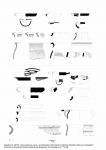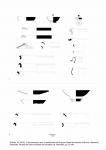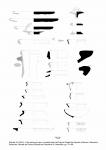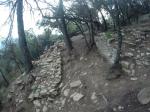Summary (English)
Research (2011-2015)
The location of the mint of Lauro has been discussed for over one century. The debate has gone from the unanimity of placing it in the territory of Valencia to the certainty of locating it in Catalonia. The extensive literature focussed on the town of Lauro, a site not yet identified but, based on the distribution of coin finds, was thought it was at the present region of the Eastern Vallés.
The find of an Iberian settlement at Puig del Castell has enabled us start up a research project to determine its positive correlation to the town of Lauro. In 2011 began the excavation campaigns to define its main structural features and to reveal its chronology. In the archaeological campaigns of 2011-2015 years, the main objectives have been to find out the perimeter of the settlement and to define the key defensive structures as well as focusing in the chronostratigraphy of the settlement of the oppidum. These archaeological works revealed an impressive defensive system; it was characterized by a wall exceeding in width at some points 2 m. It has a 1-kilometer-perimeter, half of the total already visible, with complex entrances and a minimum of nine defensive towers; and everything is in excellent conditions. With regard to the chronological range we can anticipate that the occupation of the hill began in the 5th century BC and ended around 50 BC.
But if there is an element singling out this settlement it is the potential of identifying it with the Iberian town of Lauro; surely this was the emplacement of the mint that coined money with the Iberian inscription Lauro. This conclusion is borne out by the confirmation of an important Republican phase that links it with the time when these coins were minted.
(translation by Pilar Alarcón Blázquez)
- Marc Guàrdia i Llorens
Director
- Marc Guàrdia i Llorens, CLOTS arqueologia
Team
- Alberch i Calm, Pau; Barcia García, Camilo; Candela Callado, Roger; Civit Bolaño, Roger; Espada Forns, Esteve; Espada Forns, Manel; Estany i Bassa, Salvador; Font, Elena; Giraldés Queralt, Abraham; Guardiola González, Alejandro; Hernàndez Diaz, Jordi; Herraiz Batzín, Luz de Luna; Mejías Anfrons, Alícia; Menéndez Molist, Pau; Moreno, Adrià; Palacios Nieto, Santiago; Pareja García-Marron, Albert; Parra Margall, Lluís; Pericas, Joan; Sauret Santana, Sara; Serra Rodríguez, Ester; Sobrevia Corral, Èric; Tami Mohamed, Nayim
- Marc Guàrdia i Llorens, CLOTS arqueología y Òscar Sala
- sede de CLOTS associació d’arqueologia
Research Body
- CLOTS associació d’arqueologia
Funding Body
- Ajuntament de Cànoves i Samalús
- Clots, associació d’arqueologia
- Departament de Cultura de la Generalitat de Catalunya – Servei d’Arqueologia i Paleontologia
- Diputació de Barcelona – Parc Natural del Montseny






![Download [PDF]](/excavation/skins/fasti/images/results/download_sml.png)





